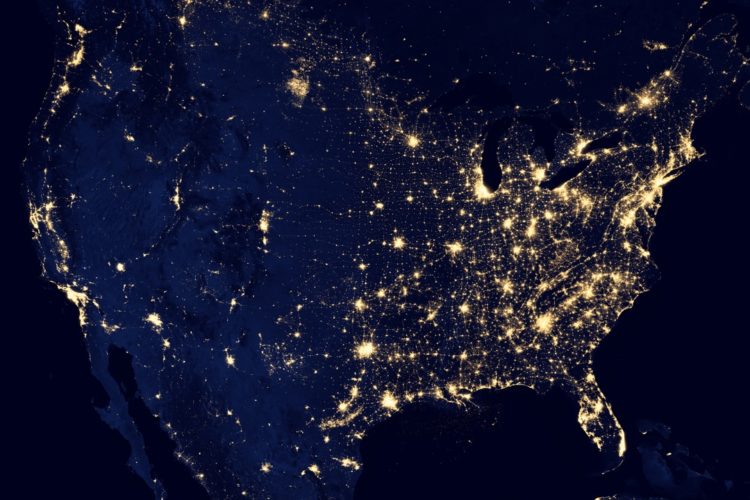The national conversation about disparities in law-enforcement practices in the wake of high profile instances of police–community violence in minority communities has been intense, heated, and often polarizing. And while the topic of race and inequality in the justice system has received increased attention, some of these same dynamics also play out in our nation’s school discipline policies and practices.
African American students, for instance, remain three times more likely to be suspended out-of-school than white students. Former National Institute of Justice director John Laub has argued that at least some of the racial inequality in the justice system is based on differential rates of offending. In contrast, reviews of racial disparities in school discipline have failed to find evidence that higher rates of school suspension and expulsion among black youth can be attributed to higher rates of disruptive behavior. Moreover, as in the case of juvenile justice inequality, at least a portion of the disparities in suspension and expulsion reflect differential treatment in the way punishment is administered in schools.
Yet just as there has been pushback when issues of possible bias in law enforcement are raised, there is often resistance in schools to examining racial disparities. After we presented data, broken down by race and showing disproportionate rates of suspension, to a school we were working with on school discipline, one principal commented: “When you present these data, I feel like you’re calling us racists.”
Our research, in two phases of a Foundation-supported study of disproportionality in discipline for African-American students, has shed some light on school contributions to discipline disparities. In the first phase, we examined a range of variables contributing to suspension and expulsion across an entire state, and found that behavioral, student demographic, and school characteristics all played a role in the likelihood that a student would be suspended or expelled. But when it came to explaining the large and consistent racial disparities in suspension present in our data, we found that school characteristics, including the principal’s perspective on discipline, were stronger predictors of out-of-school suspension than either the severity of infraction or individual characteristics.
In the second phase of the work, we moved the study closer to “ground level” by interviewing teachers and school principals about behavior and race, and observing schools and classrooms with varying levels of disciplinary disparity. The views expressed by school staff were complex and sometimes contradictory, as when one teacher who had emphasized building relationships with students was later observed sternly ordering an African-American boy out of the classroom for failing to raise his hand when he called out the right answer. We were also surprised by the number of explicit stereotypes that teachers shared with us. For instance, Black boys were characterized as lazy and disrespectful, while Black girls were described by a number of teachers as dramatic, aggressive, and loud.
Data on racial disparities in education or juvenile justice always seem to engender a certain amount of contention. Respondents to presentations or web-based reports will often describe such findings (or the researchers who present them) as “out-of-touch,” or will quote data from crime reports showing that Black individuals actually do commit more crimes. These reactions suggest a belief that there are only two possible explanations for racial disparities: Either 1) disparities are caused by deficits that students of color and their families bring with them (whether due to genes or poor environment), or 2) our systems are deeply racist. Given this perspective, it is little wonder that educators and frontline law enforcement officers often resist talking about racial disparities—if it is indeed a choice between only two alternatives, it is a far safer, more comfortable course to accept a deficit-centered explanation than to admit that we and our institutions may be contributing to continued inequality.
Without a willingness to explore a full range of possible contributions to continued inequality, our analyses are incomplete, and our interventions may miss the mark
In a recent briefing paper, however, released by the Discipline Disparities Collaborative, You Can’t Fix What You Don’t Look At: Acknowledging Race in Addressing Discipline Disparities, we suggest that these two strands of inequality—entrenched poverty and racial stereotypes—spring from the same root. Centuries of slavery and colonialism shaped a society in which opportunity was differentially distributed by the color of one’s skin, and those disparities in resources and educational opportunity persist in our schools to this day. Yet our history also shaped our stereotypes and deeply-held biases. In particular, the idea of the “dangerous Black male” was carefully nurtured and supported throughout slavery and Jim Crow segregation, and continues to shape our attitudes and behavior. For instance, officer Darren Wilson described Michael Brown as looking like a “demon” during their encounter, and research on implicit bias has shown that preference for white faces is virtually universal, even among people of color.
Segregation by race and class creates boundaries that keep us unable to face and address deeply embedded stereotypes. According to intergroup contact theory, the increased contact afforded by integration should have eroded and eventually eliminated stereotypes. But as legal avenues for desegregation have been progressively closed off by the courts, true integration of our schools has never really occurred: African-American and Latino students attend schools that are on average composed of 60 percent students of color, while white students attend schools that are on average 77 percent white. This continued segregation maintains boundaries that prevent us from exploring and confronting underlying stereotype and bias.
When faced with ongoing disparities in both juvenile justice and school disciplinary systems, it is much easier to focus solely on the effects of the disadvantages of poverty that marginalized groups have experienced. Conversations that leave open the possibility that our own institutions, habit patterns, or even our thinking could be contributing to inequality can be awkward and threatening. Conducted clumsily, such conversations may even increase resistance.
But to fix racial inequalities, we must be willing to talk about race. Without a willingness to explore a full range of possible contributions to continued inequality, our analyses are incomplete, and our interventions may miss the mark.
To the extent that inequality arises from the disadvantages of poverty, a focus on responses to the obstacles faced by poor youth, through after-school programs or better nutrition, for instance, is highly beneficial. Yet our history has also left our institutions and the individuals within them vulnerable to deeply-embedded stereotypes and limiting expectations of Black and brown students, and those unexplored stereotypes can lead to differential treatment and differential outcomes. If we truly wish to bring inequality to an end, we must be willing to examine and challenge both structural inequality due to poverty, and the limiting and corrosive stereotypes that our history has left us.






